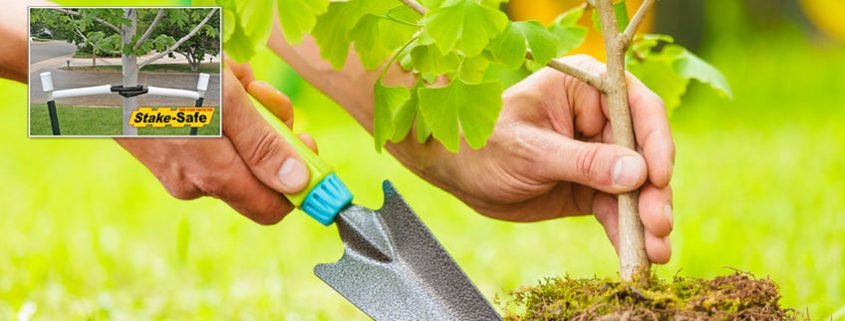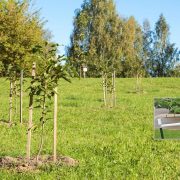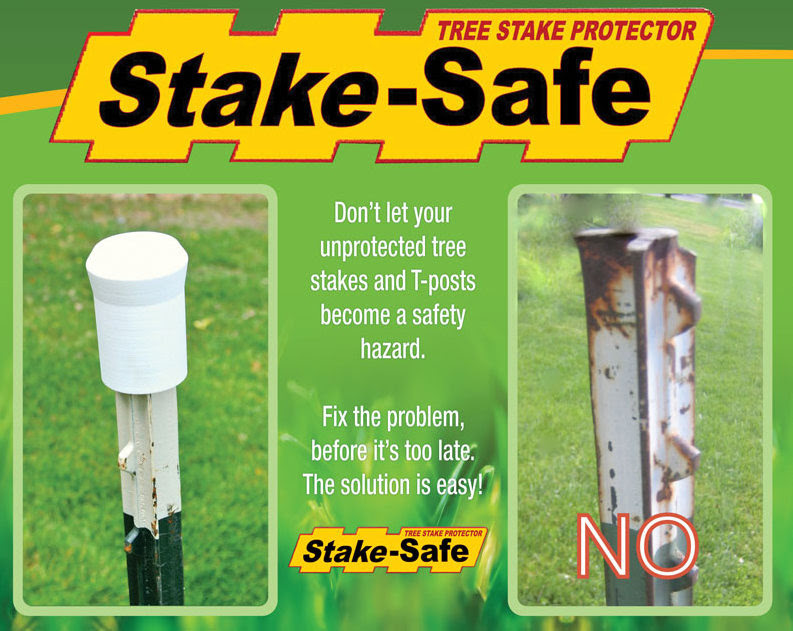Supporting New Trees with Tree Stakes | Should You Stake All New Trees
Supporting New Trees is essential for the proper growth of newly planted trees. The question is, should you stake all new trees? It’s true that all newly planted trees are susceptible to the elements. If you live in a windy area or a region that has frequent storms with high winds, it is imperative that your tree is properly supported right away. New trees are most at risk when they are initially planted and the root ball is loosely packed in the soil. However; not all trees require staking. Let’s take a quick look at the criteria for supporting new trees.
Supporting New Trees: to Stake or Not to Stake?
Plagiarizing a line from Hamlet; “to Stake or Not to Stake” this is the first question a gardener should ask. Unfortunately, many landscapers don’t fully understand the tree staking process and stake all new trees whether they need it or not. In some cases, they are doing more harm than good.
For instance, supporting new trees that don’t require tree stakes may encourage the tree to grow taller faster than its un-staked peers. The slight movement of the trunk of the un-staked tree will strengthen it and make it thicker. A good analogy would be like working out at the gym. The constant movement of the trunk will also stimulate root growth. Conversely, the taller staked tree will be more susceptible to wind damage once the stakes are removed.
Trees that Require Staking
If a young tree has a dense crown of leaves, or is otherwise top heavy, it will absolutely require some form of staking. In this case, if the tree is left un-staked the excessive swaying will unseat the root ball. Excessive winds can also move the lower portion of the trunk back and forth and open up a hole where water can collect and cause root rot. Properly supporting this type of tree will allow the roots to grow and take hold and ultimately anchor the tree.
No Staking Required
Many balled and burlapped trees do not required staking. The extra dense root ball will keep the tree upright. In fact, a little movement of the ball will encourage root growth. This natural action will result in a mature tree that is wider, shorter, and stronger.
Supporting New Trees the Right Way
For trees that do require staking, there is a right way and a wrong way. If the stakes and supports are installed incorrectly you can harm the tree. The most common error is to tie the supporting ropes too tight. This creates three problems. First, the tightly bound rope can cause chafing of the tree bark, which in severe cases can kill the tree. Secondly, the ropes should have some slack in them to allow the tree to move freely, this will promote root growth. Third, if the lower part of a trunk is completely restricted from movement, the upper part of the truck becomes thicker. This disrupts the smooth flow of nutrients. In extreme cases the top of the tree can actually snap off.
Quick Tips:
- Proper Tie Height: The ties should be placed no higher than 2 thirds up the tree trunk. This allows for some movement, and thus strengthening the upper portion of the tree.
- Flexible Connection: A flexible connection at the tree trunk can help two-fold. First it allows some movement of the lower portion of the trunk. Secondly, it avoids the danger of choking the tree trunk.
- 360 Degree Support: The wind blows freely in all directions. Install 3 supports equally spaced around the perimeter of the tree.
- Safety First: Install our Stake Safe Kit for the safety of your children and pets.
Here’s a little bonus benefit when supporting new trees with tree stakes. How often have you seen tree trunk damage caused by lawnmowers? The installation of tree stakes will keep your trees safe from the dreaded lawnmower. Simply add mulch to the area surrounding the tree trunk.
Contact Us:
If you have additional questions about the proper method for supporting new trees get in touch: Contact the Stake-SAFE Customer Support Team







